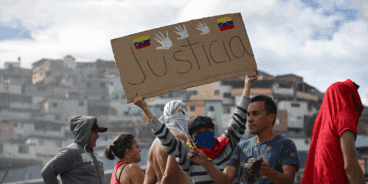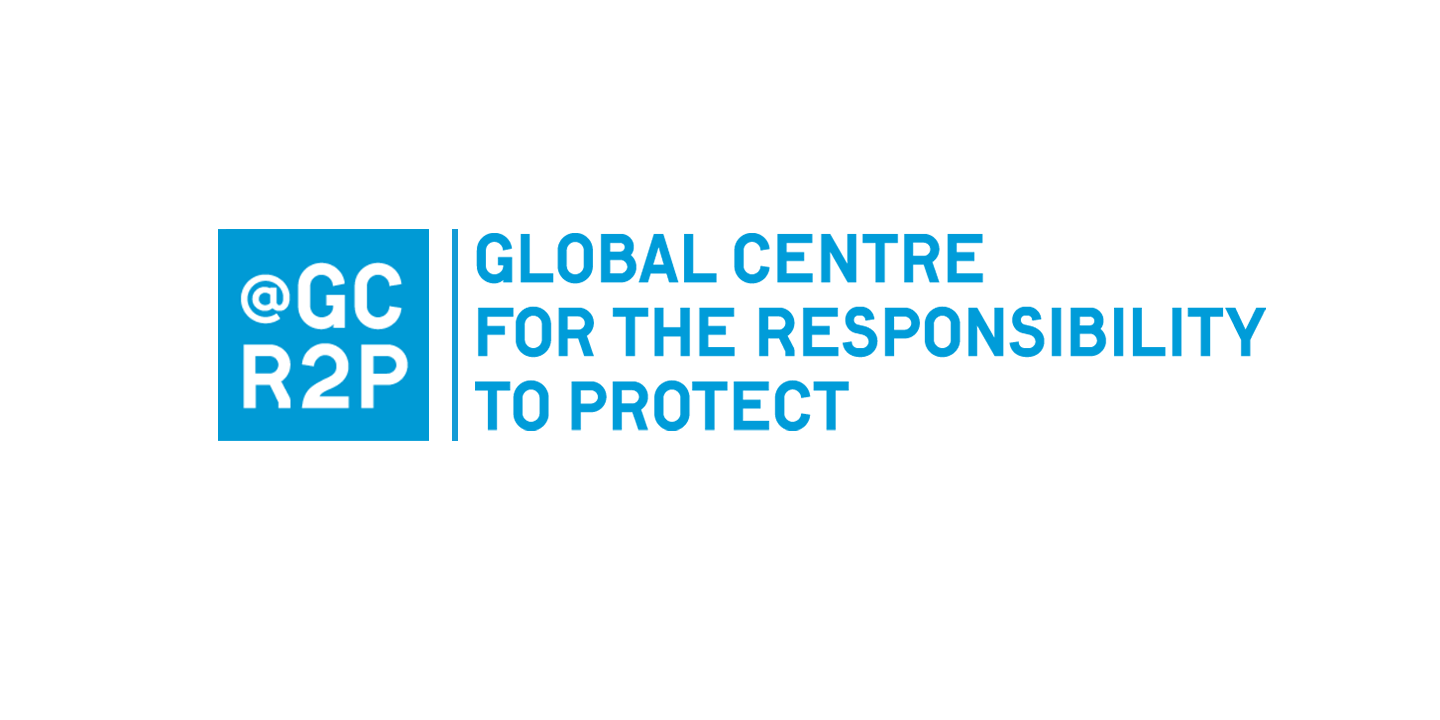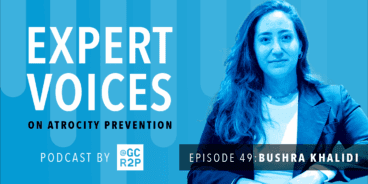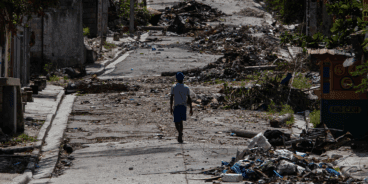

Summary of the UN Secretary-General’s 2024 Report on R2P, Responsibility to Protect: The commitment to prevent and protect populations from atrocity crimes
The UN Secretary-General issued the 16th report on the Responsibility to Protect (R2P), entitled “Responsibility to Protect: The commitment to prevent and protect populations from atrocity crimes.” Within the report the Secretary-General issues a stark warning about worrying global trends, including increasing violations and abuses of International Humanitarian Law (IHL) and International Human Rights Law (IHRL), and articulates challenges that UN member states and the international community have faced in upholding R2P over the past two decades. The Secretary-General asserts, however, that there are still opportunities to shift the current course of events through a more nuanced and strategic approach to prevention and protection by actors across all levels.
KEY POINTS
The Global Centre for the Responsibility to Protect would like to highlight the following key points from the report:
-
-
- Despite the commitment states made to R2P in 2005 and the availability of sophisticated knowledge and capacity for the promotion of human rights and the rule of law, the protection of civilians and the prevention and peaceful resolution of conflicts, the scale of human suffering is trending in the wrong direction.
- We have witnessed a pattern of state and non-state actors acting with blatant and systematic disregard for IHL and IHRL, with civilian populations facing the brunt. Such violations and abuses of IHL and IHRL may constitute genocide, war crimes, crimes against humanity and/or ethnic cleansing or enable the commission of these crimes. Trends in other enabling factors, including the instrumentalization of new and emerging digital technologies, climate change and the spread of hate speech and misinformation, have also created environments conducive to atrocity crimes.
- These patterns of abuses notwithstanding, in the last two decades, considerable progress has been made in understanding the risk factors, causes and dynamics that drive atrocity crimes and in enhancing responsiveness to warning signs. The international community has also made strides in its willingness and capacity to hold perpetrators responsible via investigative mechanisms, international courts and tribunals, and in national courts under the principle of universal jurisdiction.
- The Secretary-General highlights four key challenges in the international response to the risk of atrocity crimes: (1) prevention too often does not begin before risk factors emerge; (2) patterns that lead to atrocity crimes are often not acknowledged, resulting in a misunderstanding of the nature of a particular situation and relevant tools needed to respond; (3) discussions on response to risks are too late and fraught with polarization; and (4) the protection of populations is often not prioritized above other aims when states are responding to emerging conflicts and crises.
- In order to disrupt the actions that lead to atrocity crimes, prevention and protection must be approached as part of a continuous, permanent process. Prevention of atrocity crimes does not begin when risk factors emerge. It requires instituting policies, practices and structures that enable societal resilience to atrocity crimes and inhibit the development of the drivers of direct violence.
- What makes prevention through the responsibility to protect unique from other forms of prevention is the application of the atrocity prevention lens, which enables an assessment of patterns and dynamics as they pertain to the risk and potential commission of atrocity crimes, including identifying particular vulnerabilities of certain populations.
- Given its linkage with prevention, protection requires a continuous process of analysis, review and reporting on evolving situations and their impact on the vulnerabilities of populations. Protection measures include many mutually complementary forms, including the provision of physical protection, as well as actions taken in the legal and humanitarian fields.
-
SECTION II. GLOBAL PATTERNS IN THE ONGOING COMMISSION OF ATROCITIES
As requested by many member states during the 2023 UN General Assembly debate on R2P, the Secretary-General takes stock of current global trends with regard to the risk of and commission of mass atrocity crimes. This section highlights the dire trends across three main areas: violations of IHL in the context of growing violent conflict worldwide, violations of and failures to institutionalize protections for human rights and factors that create enabling environments for perpetrators to commit atrocity crimes.
Patterns of violations of international humanitarian law
In recent years the world has experienced a dramatic rise in violent armed conflicts. Throughout many of these crises, parties to the conflict have increasingly employed methods and means of warfare with complete disregard for human life and in flagrant violation of international law and various treaty obligations. The IHL principles of distinction, proportionality, necessity and precaution are routinely violated by both state and non-state actors. There has also been an escalating pattern in the indiscriminate use of explosive weapons in populated areas, as well as targeted attacks on civilian infrastructure and cultural heritage. Drawing upon the Secretary-General’s annual reports on other related issue areas – including the Protection of Civilians, Children and Armed Conflict and Conflict Related Sexual Violence – the section highlights further worrying trends in violations against civilian populations, as well as the targeting of civilians on the basis of their religion, ethnicity, nationality, race, descent, gender and other identity factors. The Secretary-General further notes the man-made humanitarian consequences of these conflicts, including the global forced displacement crisis and the record number of people facing acute food insecurity.
Acts that violate IHL may also constitute war crimes and may amount to crimes against humanity, ethnic cleansing or genocide. Depriving civilians of objects indispensable to their survival, including through blocking access to humanitarian aid, may amount to war crimes.
Patterns of violations and abuses of human rights
The Secretary-General recalls that throughout history, atrocity crimes have often been precipitated by serious violations and abuses of human rights by state and non-state actors. Many human rights violations and abuses may themselves constitute or amount to an atrocity crime if certain thresholds or conditions are met.
The report notes that in many situations, violations and abuses of human rights have risen alongside democratic backsliding and patterns of targeted attacks by governments against actual and/or perceived dissenting voices. As some governments have stripped societies of human rights protections, they have also increased attacks on political opponents, human rights defenders and civil society, the media and other critical voices, sometimes through arbitrary detention, torture, enforced disappearances, extrajudicial killings and other violations in a manner that may amount to crimes against humanity. The Secretary-General particularly highlighted the regression in women’s and girl’s rights.
Environments conducive to atrocity crimes
Atrocity crimes do not occur in a vacuum; they are often preceded by structural, societal and political factors that create an enabling environment for their commission. Some factors may facilitate crimes by creating the means, motives and opportunities for perpetrators to act or may inhibit their mitigation. While cautioning that the list is not exhaustive, the Secretary-General highlights trends related to several key enablers of atrocity crimes, including the continuation and expansion of discriminatory policies and practices targeting populations on the basis of identity – such as threats and attacks against indigenous populations – unconstitutional changes of government, shrinking of civic space, the spread of non-state armed groups, the role of new and emerging digital technologies in proliferating hate speech and capacity for mass surveillance and the impacts of climate change.
The report notes how each of these factors may impact societal resilience to atrocity crimes, particularly when combined with established trends in violations of IHL and IHRL. For example, in countries experiencing democratic backsliding and shrinking civic space, there are often corresponding human rights issues, including arbitrary deprivation of life and liberty, removal of due process guarantees and reversal of women’s rights, among others. Similarly, as the presence and capacity of non-state armed groups has expanded, their ability to perpetrate crimes against humanity and war crimes targeting populations has also increased. Moreover, efforts to regain territorial control and combat such groups have exacerbated fragile security situations and state actors themselves have perpetrated potential atrocity crimes in the name of counterterrorism.
SECTION III. ADVANCES AND CHALLENGES IN PREVENTING ATROCITY CRIMES AND PROTECTING POPULATIONS
This section focuses on advancements in prevention, protection and justice and accountability processes since the inception of R2P. It also reflects upon the numerous normative, conceptual and operational challenges that need to be confronted to improve the prevention of atrocity crimes and the protection of populations.
Advances in prevention and protection
The report acknowledges the progress made in understanding the processes that lead to atrocity crimes and in conceptually understanding early warning signs for atrocities, noting in particular the UN’s Framework of Analysis for Atrocity Crimes, previous Secretary-General’s reports and work within the UN Peacebuilding Commission. Efforts have also been made by states, as well as networks, such as the Global Action Against Mass Atrocity Crimes and the Global Network of R2P Focal Points, to expand early warning expertise and capacities for response.
The Secretary-General notes the expansion of international investigative bodies and mechanisms mandated to assist in the collection, consolidation and preservation of evidence of potential atrocity crimes, as well as the monitoring and advocacy on country situations by the UN High Commissioner for Human Rights. In this regard, the report acknowledges how some of these bodies have utilized the Framework of Analysis for Atrocity Crimes in their assessments of situations with ongoing crimes or potential atrocity risks.
The section also acknowledges the progress made in transitional justice and memorialization as methods for dealing with the past and promoting truth, justice and non-recurrence. Moreover, the Secretary-General notes how national courts, international criminal courts and tribunals and the International Court of Justice have all played critical roles in holding perpetrators accountable for atrocity crimes.
Further challenges in prevention and protection
The advances highlighted by the Secretary-General demonstrate the depth of relevant information on risks, the existing potential to prevent their occurrence and the available institutional capacity to protect vulnerable populations and hold perpetrators of atrocity crimes accountable. They also expose the failure of the international community to prevent and protect populations from atrocity crimes. The report articulates four key challenges that contribute to the failure to realize the promise of R2P.
First, the international community has not capitalized on opportunities to start prevention initiatives before risk factors emerge. States and regional and international bodies need to more consistently take preemptive steps, such as instituting policies, systematic research, practices and structures that identify risk indicators and inform policy makers to enable societal resilience to atrocity crimes, including through the development of measures, laws and initiatives that protect the rights of all populations, prevent their marginalization and inhibit the development of the drivers of direct violence.
Second, improved understanding of the risk factors and gathering of early warning has not always translated into assessments and timely decision making. Due to the exceptional nature of atrocity crimes, patterns that lead to their commission are often not acknowledged or the potential trajectory of early warning information is not adequately anticipated, resulting in a lack of timely decision making.
Third, due to the lack of timely preventive action, discussions on response often occur when options are more limited and when decision-makers across all levels are more polarized.
Fourth, even when the risks are understood or clearly articulated, priority is not sufficiently given to develop adequate and appropriate measures to protect affected populations amidst other considerations decision-makers face in a particular situation. Moreover, the Secretary-General emphasizes the need to ensure that the knowledge and expertise of affected communities are centered in policy, practice and understanding.
SECTION IV. UNDERSTANDING EFFECTIVE PREVENTION AND PROTECTION
To address the challenges put forward in Section III, the Secretary-General highlights several aspects of prevention and protection that states and other actors should consider in order to bolster efforts to limit the occurrence and impact of atrocity crimes.
Prevention as a continuous process
The best way to disrupt the actions that lead to atrocity crimes is to approach prevention and protection as part of a continuous, permanent process. This includes not only a response to imminent and emerging risks, but also instituting policies, practices and structures that build long-term societal resilience to atrocity crimes. In this sense, the early prevention of atrocities is not significantly distinct from practices that support good governance: ensuring respect for the rule of law, supporting a competent and independent judiciary, protecting human rights, enabling civil society and the media to operate without interference or fear of reprisals and creating a political culture that favors tolerance and diversity. These are steps that governments can take to build the institutional architecture to prevent the drivers of atrocities from emerging.
Embodying prevention as a continuous process also includes consistent monitoring and assessment of risks amidst societal transformation and, when necessary, instituting necessary reforms to confront those risks.
A unique framework for atrocity crimes prevention
The Secretary-General invokes the atrocity prevention lens as a strong framework for enabling actors to better understand and more adequately respond to the drivers of crimes. Application of this lens includes identifying factors and indicators and assessing dynamics as they pertain to the risk and potential commission of atrocity crimes, guiding the necessary action at the domestic, regional and international level to prevent their perpetration and to effectively protect populations. This lens compels actors to reframe analysis and intelligence-gathering in order to recognize patterns of behavior and dynamics that may enable or precede atrocity crimes. The atrocity prevention lens also assists in identifying specific vulnerabilities of certain populations – including ethnic and religious minorities, women, populations with distinct sexual orientations and gender identities, children, disabled populations and others – and detects factors that may put them at particular risk to atrocity crimes.
The atrocity prevention lens may also represent an added value for existing conflict prevention, conflict resolution and protection agendas as it compels decision-makers to devise political strategies to counter threats and to avoid solutions that may exacerbate societal cleavages, structural exclusion or violence among groups. As it provides a more tailored understanding of the broader political landscape and how it relates to the threat to populations at risk, stakeholders can better understand what factors in the political process may act as triggers for wider violence or atrocities and what actions by state and non-state actors may exacerbate vulnerabilities faced by certain populations or regions of the country.
Prevention and protection: a cooperative effort
The report emphasizes that effective protection is only possible when informed by preventive assessments. The best outcomes will be reached when prevention and protection are implemented together.
Multiple forms of protection in action
When populations need protection, there are a variety of effective and complementary international instruments that can be utilized. Diverse entities within the UN, national governments and regional bodies, as well as independent human rights institutions, human rights defenders, civil society, and independent media, can all play a critical role in documenting and drawing attention to violations and abuses of human rights, threats to the physical integrity of populations and patterns in attacks.
Legal protection
At the heart of prevention and protection of atrocity crimes lies the legal guarantee of protection provided by states through constitutional and legislative policies, as well as through compliance with international protection instruments, including the Convention on the Prevention and Punishment of the Crime of Genocide, the Convention against Torture and Other Cruel, Inhuman or Degrading Treatment or Punishment, the International Covenant on Civil and Political Rights, the International Covenant on Economic, Social and Cultural Rights and other rights-based instruments. Domestic legal frameworks should be designed in a manner that protects all populations by ensuring equal access to public services and full human right protections. The UN and other states parties to various conventions can also provide legal protection by reminding states of their obligations to populations under the respective conventions and, when necessary and permitted by the relevant treaty body, issue formal complaints about non-compliance.
Preventive diplomacy, good offices and mediation
Preventive diplomacy and mediation aimed at reducing tensions, averting violent escalations and negotiating among parties to conflicts or disputes is a necessary component of ensuring the long-term success of protection efforts. Negotiations among trusted leaders have prompted conflicting parties to step back from violent rhetoric and escalatory action, make political commitments to halt abuses and rethink the tactics utilized in protected civilian spaces. Domestic actors, such as local community and religious leaders, civil society activists and women’s and youth groups, also play a crucial role in de-escalating situations and in engendering dialogue between warring parties or groups.
Physical protection
The Secretary-General notes that a security sector that is community-based and respects international norms and standards on prevention is one of the most important actors in ensuring physical protection of all populations from atrocity crimes. This is particularly the case if the security sector is equipped with knowledge of the atrocity prevention lens and an understanding of the unique vulnerabilities of populations they may be protecting. When necessary, the UN Security Council may authorize regional or international forces to provide physical protection. However, the Secretary-General cautions that states should consider the use of force as a last resort because military action may have a devastating impact on populations.
Humanitarian aid and humanitarian protection
Many of the situations where atrocity crimes are ongoing have resulted in dire man-made humanitarian emergencies as populations flee en-masse and, in some cases, civilian infrastructure is attacked and humanitarian aid blocked. It is essential that humanitarian actors be provided access to all populations, including those in conflict areas, and that there be accountability for any actor who blocks or diverts aid. The Secretary-General further notes that there is growing recognition of the importance of developing a long-term, comprehensive plan and integrated framework to bridge the divide between humanitarian relief, development assistance and peacebuilding.
SECTION V. UPHOLDING THE RESPONSIBILITY TO PROTECT: CONCLUSION AND THE WAY FORWARD
The Secretary-General concludes by reminding states that next year will mark 20 years since the adoption of R2P at the 2005 World Summit and emphasizing the need to produce more tangible results in preventing atrocities and protecting populations. The Secretary-General further encourages states, regional bodies and UN entities to assess and further develop their capacities to prevent mass atrocities.
Related Content


Expert Voices on Atrocity Prevention Episode 49: Bushra Khalidi
